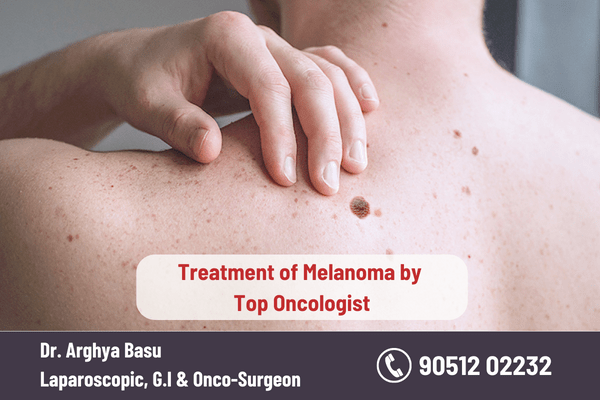Treatment of Melanoma by Top Oncologist

Melanoma is a variant of skin cancer formed in the melanocytes, cells that produce skin pigmentation. It is a severe condition that can spread quickly to other body parts if not diagnosed and treated early. In this article, we will discuss melanomas and the different aspects related to them, including their causes, symptoms, and treatment options. Get in touch with the top oncologist for the complete treatment.
Understanding Melanomas
Melanomas are caused by changes in the DNA of melanocytes, which can lead to their uncontrolled growth and division. The exact cause of these DNA changes is unknown, but exposure to ultraviolet (UV) radiation from the sun or tanning beds is a significant risk factor for developing melanoma. Other risk factors include:
• Having fair skin.
• A family history of melanoma.
• Having many moles or atypical moles.
Symptoms of Melanomas
The early signs of melanoma are often changes in the shape, color, or size of an existing mole or the appearance of a new mole on the skin. These changes may include:
1. An asymmetrical shape
2. Irregular borders
3. A mixture of colors or shades within the mole
4. A diameter more significant than a pencil eraser
Changes in elevation, such as a raised or bumpy mole
Melanomas can occur anywhere on the body, including areas not typically exposed to the sun, such as the palms of the hands, the soles of the feet, and under the nails. If it is detected, consult the best cancer surgeon.
Diagnosis of Melanomas
If you suspect, you may have melanoma, seeing a dermatologist or doctor specializing in skin diseases is essential. The doctor will perform a skin exam to look for unusual moles or other abnormalities. If a suspicious mole is identified, a biopsy will be done to remove a mole sample for examination under a microscope.
If the biopsy shows melanoma is present, further testing may be necessary to determine the extent of the cancer and whether it has spread to other body parts.
Treatment of Melanomas
The treatment for melanoma depends on the stage of the cancer and the patient’s overall health. Some standard treatment options for melanoma include:
1. Surgery: Surgery is the primary treatment for melanoma and involves removing the cancerous mole and some of the surrounding tissue. Sometimes, a biopsy may be necessary to determine whether the cancer has spread to the lymph nodes.
1. Radiation therapy is essential, where high-energy X-rays and other forms of radiation are used to destroy the cancer cell. It may be used after surgery to kill any remaining cancer cells or as a primary treatment for melanomas that cannot be surgically removed.
1. Chemotherapy utilizes drugs to destroy the cancer cell. It may treat advanced melanomas or melanomas that have spread to other parts of the body.
1. Immunotherapy: Immunotherapy is a treatment that utilizes the body’s immune system to combat cancer. It may treat advanced melanomas that have not responded to other treatments.
1. Targeted therapy: Targeted therapy uses drugs to target specific proteins or genes involved in the growth and spread of cancer cells. It may be used to treat melanomas that have specific genetic mutations.
Conclusion
Melanoma is a critical sort of cancer that needs proper diagnosis and treatment. If you notice any changes in your moles or skin, seeing a dermatologist or doctor specializing in skin diseases is essential as soon as possible. With early detection and treatment, melanoma can often be successfully treated, and patients can go on to live healthy, active lives.
FAQ –
1. What is melanoma?
Melanoma is a type of skin cancer that develops from the cells that produce skin pigmentation, called melanocytes. It can appear as a new mole or as changes to an existing mole, and it can spread quickly to other parts of the body if not diagnosed and treated early.